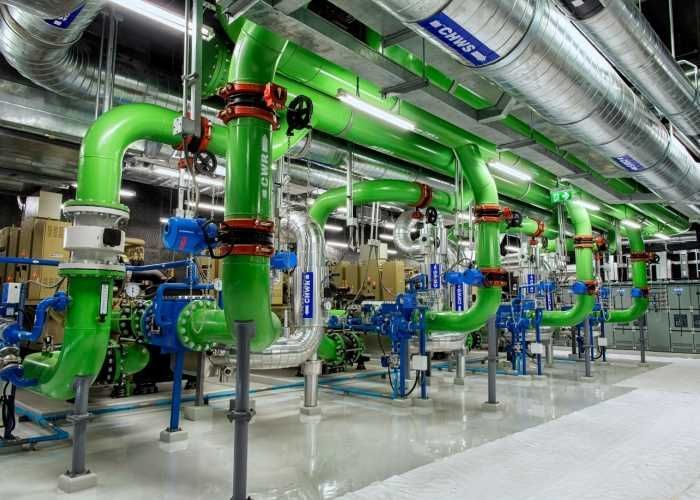Industrial Air-Cooled Chillers: A Practical Overview for Modern Cooling Needs
Industrial air-cooled chillers are essential systems designed to remove heat from industrial processes, HVAC systems, or machinery. Unlike water-cooled systems, air-cooled chillers use ambient air to dissipate heat through a refrigeration cycle involving compressors, condensers, and evaporators.
They are commonly used in industries such as plastics, chemicals, pharmaceuticals, food processing, and commercial buildings where consistent and controlled cooling is critical. These chillers are installed outdoors or in mechanical spaces and are known for their simplicity, lower upfront costs, and ease of maintenance compared to their water-cooled counterparts.

Air-cooled systems have evolved as a response to increasing demand for scalable, modular cooling solutions that do not require a constant water supply or large cooling towers. As energy efficiency and automation become key factors in operations, air-cooled chillers offer a practical and adaptable solution for many industrial and commercial users.
Why This Topic Matters: Applications and Benefits
Industrial air-cooled chillers play a significant role in modern infrastructure and operations. They matter today more than ever due to global concerns about energy usage, climate change, and process reliability.
Key Applications Include:
-
HVAC systems for large buildings and data centers
-
Plastic molding and extrusion machinery
-
Beverage and food processing plants
-
Pharmaceuticals and chemical production
-
Metal fabrication, welding, and laser cooling
Main Advantages:
-
No water dependency: Ideal for areas with water scarcity
-
Lower maintenance costs: No water treatment or tower maintenance
-
Flexible installation: Can be placed outside or on rooftops
-
Energy efficiency: Newer models include variable speed fans and compressors
-
Reduced risk of corrosion: Compared to water-cooled counterparts
These systems are especially important in regions with limited water resources or where local regulations restrict water consumption in industrial cooling applications.
Trends and Recent Developments (2024–2025)
In the past year, several key trends have shaped the industrial air-cooled chiller market:
1. Shift Toward Low-GWP Refrigerants (2024–2025):
Chiller manufacturers are rapidly transitioning to environmentally friendly refrigerants such as R-1234ze, R-32, and R-290 in line with global environmental agreements. This shift is driven by regulations aiming to reduce greenhouse gas emissions.
2. Smart Chiller Technology and IoT Integration:
Advanced models in 2025 feature built-in sensors, remote monitoring, and predictive maintenance capabilities. These technologies reduce downtime and improve efficiency by detecting anomalies early.
3. Energy Efficiency Standards Rising Globally:
Regions like the EU, US, and parts of Asia have raised energy efficiency benchmarks for HVAC systems. This has led to a surge in demand for inverter-based and high-SEER-rated chillers.
4. Modular and Scalable Design:
Industrial sites now prefer modular air-cooled units that can be scaled based on production load. Manufacturers like Trane, Daikin, Carrier, and Blue Star are releasing modular designs optimized for mid-sized facilities.
5. Growth in Asia-Pacific:
India, Southeast Asia, and China are seeing increased adoption of air-cooled chillers, particularly in pharmaceuticals and textiles, driven by infrastructure expansion and government incentives.
Policy and Regulatory Environment
Various global and local policies affect the manufacturing, sale, and use of air-cooled chillers. Understanding these rules ensures compliance and long-term operational efficiency.
Notable Regulations and Standards Include:
| Region | Relevant Policies | Key Impact |
|---|---|---|
| United States | ASHRAE 90.1, EPA SNAP, DOE Energy Conservation Standards | Limits energy use and refrigerant types |
| European Union | Ecodesign Directive, F-Gas Regulation | Mandates low-GWP refrigerants and energy labeling |
| India | Bureau of Energy Efficiency (BEE), PAT Scheme | Promotes energy-efficient industrial processes |
| Global | Kigali Amendment to Montreal Protocol | Phasing down HFCs, impacting refrigerant selection |
Useful Tools and Resources for Users
If you're planning to select, install, or maintain an industrial air-cooled chiller, the following tools and platforms can help:
-
Chiller Sizing Calculators (by Trane, Carrier, Daikin): Estimate required cooling capacity based on process or building size
-
ASHRAE Handbook – HVAC Systems and Equipment: Offers comprehensive design guidance
-
BEE India Star Rating Tool: For checking energy ratings of HVAC equipment
-
Refrigerant Transition Guidelines (by EPA or EEA): Helps in selecting compliant refrigerants
-
Smart Monitoring Apps (by OEMs): Offer real-time tracking, alerts, and analytics
-
CMMS (Computerized Maintenance Management Systems): For scheduling and tracking maintenance tasks
These tools are vital for ensuring operational reliability, regulatory compliance, and efficient resource use.
Frequently Asked Questions
Q1: What is the difference between air-cooled and water-cooled chillers?
Air-cooled chillers use ambient air to cool the refrigerant, while water-cooled chillers use water from a cooling tower. Air-cooled systems are easier to install and maintain but may be less efficient in extremely hot environments.
Q2: How do I choose the right capacity for an industrial air-cooled chiller?
Capacity depends on heat load, operational hours, ambient temperature, and process requirements. Use OEM-provided calculators or consult a mechanical engineer for accurate sizing.
Q3: Are air-cooled chillers suitable for humid climates?
They are functional in humid climates but may experience reduced efficiency. Proper ventilation and unit placement can improve performance in such environments.
Q4: How often should industrial chillers be serviced?
Preventive maintenance is usually recommended quarterly. This includes checking refrigerant levels, inspecting coils, monitoring electrical components, and cleaning air filters.
Q5: Can air-cooled chillers be used indoors?
They are typically installed outdoors due to the need for adequate airflow. If used indoors, special ventilation systems must be installed to ensure effective heat dissipation.
Final Thoughts
Industrial air-cooled chillers are critical components in modern manufacturing, commercial HVAC, and process cooling. With evolving environmental regulations, rising energy efficiency standards, and the push toward smarter infrastructure, these systems are becoming more advanced and necessary.
Staying informed about the latest trends, policy shifts, and technology innovations will help facility managers, engineers, and decision-makers ensure sustainable, compliant, and cost-effective cooling operations.
Whether you're managing a large data center, a food production line, or an HVAC setup in a corporate tower, understanding air-cooled chillers and their strategic value is key to operational success.
